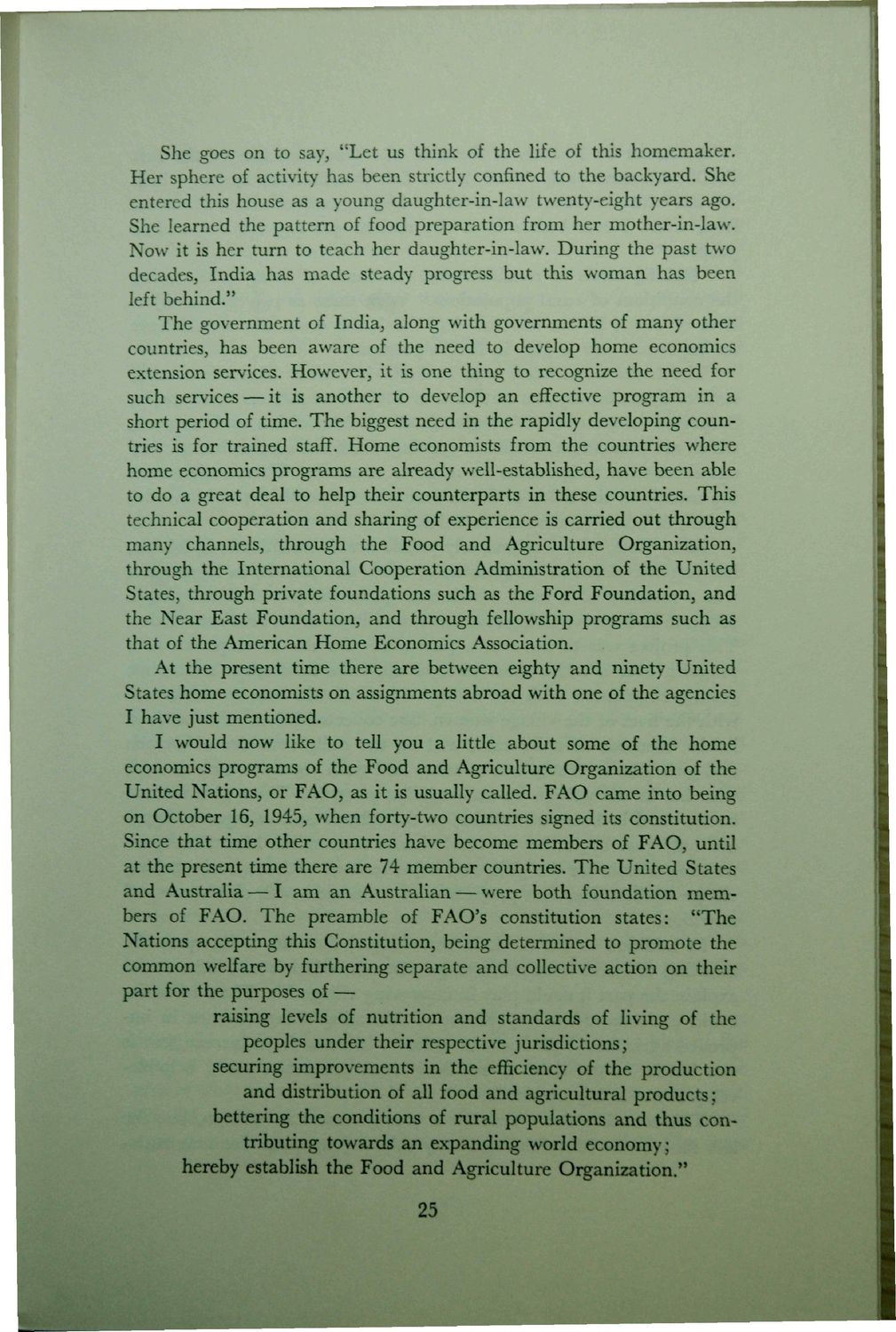| |
| |
Caption: Dedication - Home Economics - Challenge of Home Economics
This is a reduced-resolution page image for fast online browsing.

EXTRACTED TEXT FROM PAGE:
She goes on to say, "Let us think of the life of this homemaker. Her sphere of activity has been strictly confined to the backyard. She entered this house as a young daughter-in-law twenty-eight years ago. She learned the pattern of food preparation from her mother-in-law. Now it is her turn to teach her daughter-in-law. During the past two decades, India has made steady progress but this woman has been left behind." The government of India, along with governments of many other countries, has been aware of the need to develop home economics extension services. However, it is one thing to recognize the need for such services — it is another to develop an effective program in a short period of time. The biggest need in the rapidly developing countries is for trained staff. Home economists from the countries where home economics programs arc already well-established, have been able to do a great deal to help their counterparts in these countries. This technical cooperation and sharing of experience is carried out through many channels, through the Food and Agriculture Organization, through the International Cooperation Administration of the United States, through private foundations such as the Ford Foundation, and the Near East Foundation, and through fellowship programs such as that of the American Home Economics Association. At the present time there are between eighty and ninety United States home economists on assignments abroad with one of the agencies I have just mentioned. I would now like to tell you a little about some of the home economics programs of the Food and Agriculture Organization of the United Nations, or FAO, as it is usually called. FAO came into being on October 16, 1945, when forty-two countries signed its constitution. Since that time other countries have become members of FAO, until at the present time there are 74 member countries. The United States and Australia — I am an Australian — were both foundation members of FAO. The preamble of FAO's constitution states: "The Nations accepting this Constitution, being determined to promote the common welfare by furthering separate and collective action on their part for the purposes of — raising levels of nutrition and standards of living of the peoples under their respective jurisdictions; securing improvements in the efficiency of the production and distribution of all food and agricultural products; bettering the conditions of rural populations and thus contributing towards an expanding world economy; hereby establish the Food and Agriculture Organization." 25
| |